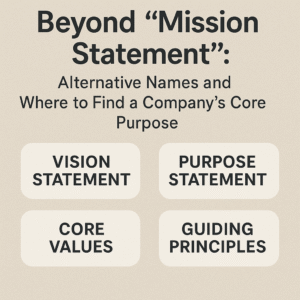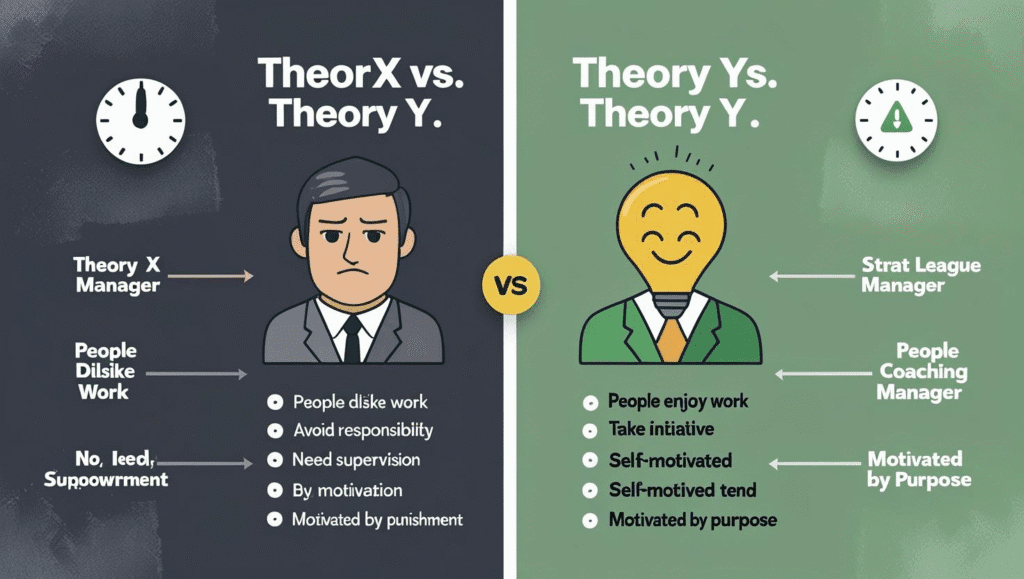Beyond “Mission Statement”: Alternative Names and Where to Find a Company’s Core Purpose
Every organization, from a Silicon Valley startup to a century-old nonprofit, is guided by a core purpose. Traditionally, this purpose has been encapsulated in a formal **”mission statement.”** This concise declaration is meant to be the North Star of the company, defining what it does, who it serves, and what makes it unique. It’s the “why” behind the “what.” 🌟
But in the modern U.S. business landscape, the classic “mission statement” is evolving. Many forward-thinking companies are moving away from the term, viewing it as corporate jargon. They are embracing alternative names that feel more dynamic, authentic, and inspiring. Furthermore, the way this core purpose is communicated has expanded far beyond a dusty plaque in the lobby. It’s a living, breathing part of the brand that appears in a multitude of locations, both online and off.
This comprehensive guide will explore the various alternative names for a mission statement that are gaining traction today. We will also pinpoint the typical locations—both physical and digital—where you can find this crucial piece of a company’s identity. For entrepreneurs, marketers, job seekers, and consumers, knowing what to look for and where to find it provides a powerful insight into the soul of any organization.
Key Takeaways: Finding the North Star ⭐
- A mission statement defines an organization’s purpose, its primary objectives, and its target audience.
- Modern alternative names include **Credo, Philosophy, Our Purpose, Statement of Purpose, and Core Principles**.
- The most common place to find a company’s mission is on the **”About Us” page** of its website.
- Other key locations include **annual reports, employee handbooks, career pages, and social media profiles**.
- The language may change, but the function remains the same: to articulate the fundamental reason the organization exists.
The Evolution of Language: Alternative Names for a Mission Statement
The term “mission statement” can sometimes feel sterile and static. To combat this, many companies have adopted different terminology to convey their purpose with more energy and authenticity. While the underlying goal is the same, these alternative names often carry slightly different connotations.
1. Our Purpose / Purpose Statement
This is arguably the most popular and straightforward alternative. It’s simple, direct, and cuts through corporate speak. Using “Our Purpose” feels less like a formal declaration and more like a heartfelt statement of intent. It answers the fundamental question, “Why do we get out of bed in the morning?” Google’s famous (though now evolved) purpose statement was “to organize the world’s information and make it universally accessible and useful.”
2. Credo
Derived from the Latin for “I believe,” a credo is a statement of the fundamental beliefs or aims that guide someone’s actions. It’s a powerful, value-laden term. Johnson & Johnson’s famous “Our Credo” is a prime example. It outlines the company’s responsibilities to its customers, employees, communities, and stockholders, in that specific order of priority. Using the word “Credo” signals a deep, almost philosophical commitment to a set of principles.
3. Company Philosophy
Similar to a credo, a “philosophy” suggests a more detailed set of guiding principles or a particular way of thinking about the business. It often goes beyond a single sentence to describe the company’s entire approach. For example, a software company’s philosophy might detail its commitment to open-source development, user-centric design, and transparent pricing.
4. Our “Why”
Popularized by Simon Sinek’s “Start With Why,” this framing has become incredibly popular, especially with startups and purpose-driven brands. It focuses on the inspirational, emotional core of the company’s existence. Instead of stating what the company does, it explains the underlying belief that drives the organization. This approach is highly effective for building an emotional connection with both customers and employees.
“People don’t buy what you do; they buy why you do it. And what you do simply proves what you believe.” – Simon Sinek
5. Core Principles / Guiding Principles
This term is often used for a set of statements that, taken together, function as a mission. Instead of one overarching sentence, a company might list three to five core principles that guide all its decisions. Amazon, for example, is famous for its set of leadership principles, such as “Customer Obsession” and “Invent and Simplify.”
Where to Find a Company’s Mission: A Treasure Map
A company’s purpose statement is a key piece of its public identity. Here are the most common places to look for it.
| Location | Why It’s There | What to Look For |
|---|---|---|
| 1. “About Us” Page on the Website | This is the #1 location. It’s the digital front door for anyone wanting to learn about the company’s identity and history. | Look for headings like “Our Mission,” “Our Purpose,” “Who We Are,” or “Our Story.” |
| 2. Annual Reports | For public companies, the annual report is a key document for investors. The mission is often stated prominently at the beginning to provide context for the financial results. | Check the “Letter from the CEO” or the opening introductory sections. |
| 3. Employee Handbook / Onboarding Materials | The mission is a crucial tool for aligning new hires and shaping corporate culture. | It’s usually one of the first things presented to a new employee to establish the company’s values. |
| 4. Career / Jobs Page | To attract candidates who are a good cultural fit, companies use their mission to appeal to purpose-driven job seekers. | It’s often used as a headline or a key part of the “Why Work Here?” section. |
| 5. Social Media Profiles | The “bio” section on platforms like LinkedIn, Twitter, and Instagram is prime real estate for a concise version of the company’s purpose. | Look in the main profile description, often pinned to the top. |
A company’s digital presence is a direct reflection of its mission. Everything from the design of their website, which relies on one of the best web hosting services to ensure a good user experience, to their customer interaction strategy, often managed with CRM software, should be an extension of their stated purpose.
Crafting and Living Your Purpose
Defining your organization’s purpose is one of the most important strategic exercises a leader can undertake. These books, available on Amazon, are essential reading for anyone tasked with crafting or communicating a powerful mission.

Start with Why: How Great Leaders Inspire Everyone to Take Action
The foundational text on the power of purpose. Sinek provides a clear framework (The Golden Circle) for discovering and articulating your “Why.”
View on Amazon
Good to Great: Why Some Companies Make the Leap… and Others Don’t
Collins’ research reveals that elite companies have a deep and unwavering understanding of their core purpose, which they use to guide all their decisions.
View on Amazon
Building a StoryBrand: Clarify Your Message So Customers Will Listen
This book provides a powerful marketing framework that is essential for translating your internal mission into an external message that resonates with customers.
View on AmazonFrequently Asked Questions (FAQs)
Q1: What’s the difference between a mission statement and a vision statement?
A: This is a common point of confusion. A **mission statement** focuses on the **present**; it defines what the organization does, who it serves, and its overall purpose *today*. A **vision statement** focuses on the **future**; it describes the world as it would exist if the organization achieved its ultimate, long-term goals. The mission is what you do; the vision is the change you want to create.
Q2: How long should a mission statement be?
A: As short and memorable as possible. Ideally, it should be a single, powerful sentence that is easy for every employee and customer to understand and remember. Some of the most famous mission statements are just a few words long (e.g., TED: “Spread ideas.”).
Q3: Why do some companies not have a public mission statement?
A: Some companies, particularly older or more traditional firms, may not have a formally articulated public mission. Others, especially in highly competitive fields, may choose to keep their strategic purpose more internal. However, in the modern era of brand transparency, it is increasingly rare and often seen as a red flag for a company not to have a clear, public statement of its purpose.
Q4: Can a company’s mission change over time?
A: Yes, absolutely. As markets evolve, technologies change, and a company grows, its purpose may need to be refined or updated to reflect its new reality. A company’s core values should remain stable, but the mission that expresses those values can and should evolve. Microsoft’s mission, for example, has evolved from “A computer on every desk and in every home” to “To empower every person and every organization on the planet to achieve more.”


